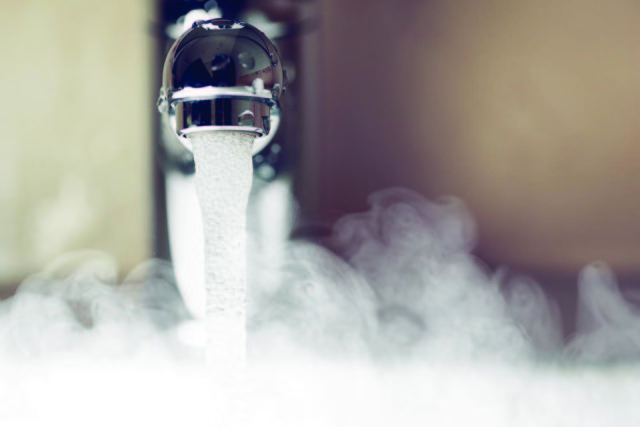Fighting fire

The Association of Tank and Cistern Manufacturers (ATCM) considers the use of combined cisterns and tanks for firefighting and domestic use.
It is becoming more common to use a combined domestic and sprinkler water storage tank rather than using a separate tank for the sprinkler system and separate tank for domestic use. We are of the opinion at the Association of Tank and Cistern Manufacturers (ATCM) that this is not practical and it also raises some very serious issues with water quality.
The general reason generally offered for doing this is space-saving. However, in reality it is a decision that is more likely to be cost driven. With modern manufacturing and installation techniques it is possible to put two tanks right up to each other without taking up extra valuable space, so this does not have to be regarded as a problem for designers.
To ensure the fire sprinkler capacity, designers always need to maintain a minimum volume of water to be able to supply the sprinkler system in the event of a fire. Enough water then has to be stored in excess of this to meet the requirements for domestic use.
It is generally accepted in the UK that most water storage tanks are oversized anyway, which means that even more water is stored than would ever be required by a building or its occupants. Of course, this stored water can create an ideal environment for bacteria to thrive. The water must be turned over every 24 hours to keep it safe. This can be done with a delayed action valve (such as manufactured by Keraflo). However, that is not an ideal solution.
HSE guidance on Legionnaires’ Disease (Part 2) states: “The volume of stored cold water should be minimised and should not normally exceed that required for one day’s water use.”
It is important to note that, in order to meet the legal requirements of the Health & Safety at Work Act, water storage tanks for domestic must be inspected, cleaned and chlorinated as part of legionella risk assessment - this is not a discretionary undertaking. The risk assessment would normally dictate that the tank would have to be cleaned and chlorinated usually as a minimum once a year.
Naturally, a large tank that stores water for the fire sprinkler system and domestic water requirements, the over-capacity means that cleaning and chlorination may have to take place more frequently. And as the tank is also part of the dedicated firefighting for the building, any cleaning and chlorination would have to be undertaken when the building is closed. What’s more, the building may be uninsured unless additional provision fire protection is put in place.
The logical argument to this is to use a tank with a division so you can keep one side in use while the other is in service. However in reality this makes the situation even worse. There will now be double the amount of water over-storage than originally intended as each division would have to be able to meet 100% of the demand.
As well HSE guidance, there are also the requirements of the Water Regulations 1999 to take into account. These state that dedicated stored water for firefighting is deemed to be fluid category 5 and therefore requires an AB air gap. The challenge is that although the weir slot should be screened and should have a light cowl on the inside, this still allows for the ingress of dust.

This potentially affects the quality of water in the tank which in the case of a ‘shared’ tank is also used for drinking. This also increases the likelihood of the chances of the tank water temperature rising in the summer as it is more open to the atmospheric temperature of the plant room, thereby increasing the opportunity for unwanted bacteria to flourish.
Sprinkler tanks need to meet the requirements of Loss Prevention Standard (LPS)1276 which states this type of tank must have a vortex inhibitor. There is no WRAS approved vortex inhibitor currently on the market, which means that the domestic tank would not be WRAS approved. Furthermore it is not possible to show that the tank meets the requirements of the Water Regulations and that the materials used are safe to use with drinking water.
A lot of this issues with combined tank approach may not to come to light which the building is handed over or even when in use, when regular temperature and sampling of the tank is carried out. At this point the to rectify the system would not only be extremely costly but very difficult to overcome from a design and installation point of view.
Given the potential issues of combining water storage for sprinkler systems and domestic water requirements, the ATCM advises designers to think carefully before adopting this approach.
Picture credits
Tap: Shutterstock/nikkytok
Sprinkler: Shutterstock/Junesama







